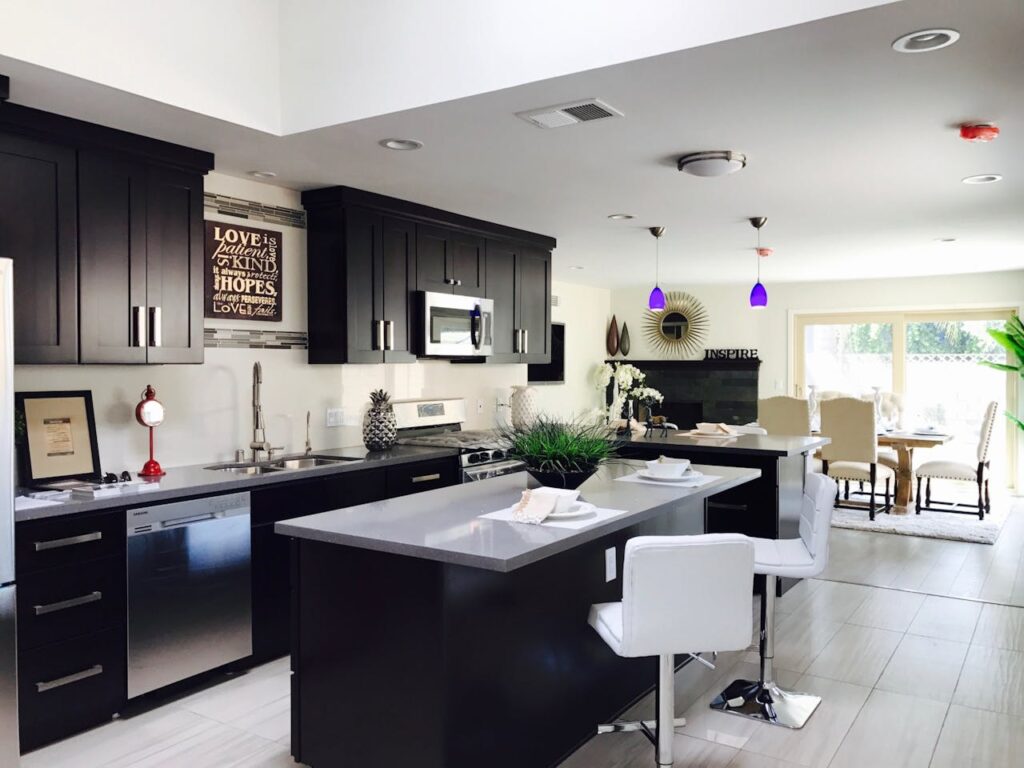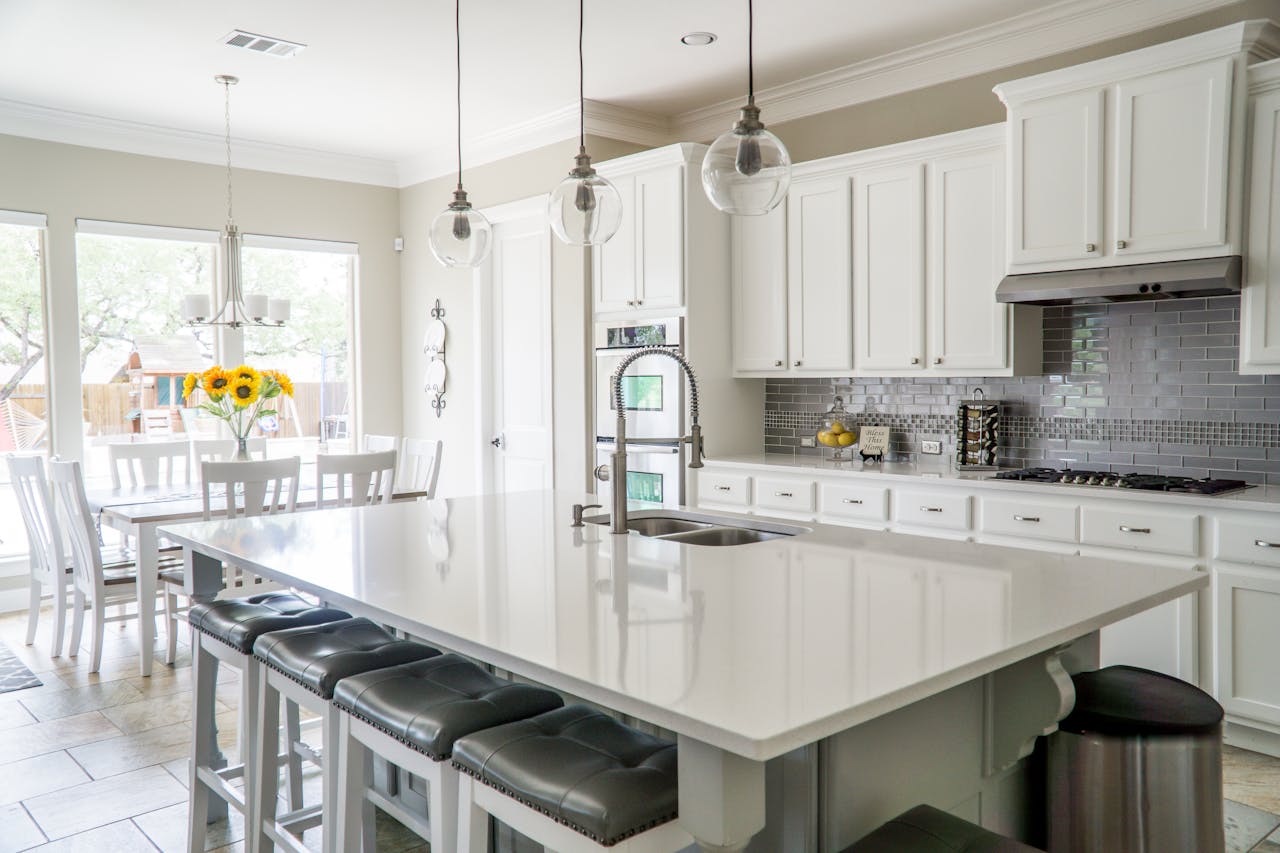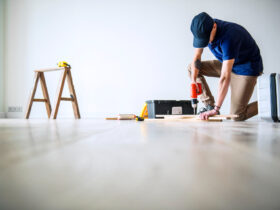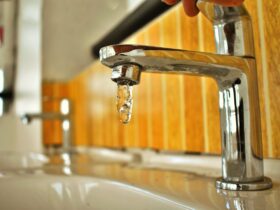The kitchen is one of the most vital spaces in any home, serving as a hub for daily meals, family gatherings, and social events. From early morning coffee routines to late-night snacks, the kitchen supports a multitude of activities that keep the household running. It’s a place of nourishment and a center of comfort and connection. Beneath the surface of its daily charm lies a complex plumbing system that, when functioning smoothly, goes unnoticed. Yet, when issues arise, they can quickly disrupt the flow of home life. Ensuring that the plumbing in your kitchen functions properly is essential to maintaining a smooth household. Kitchen plumbing issues disrupt daily activities and can lead to significant damage and costly repairs if left unattended. A small leak or clog can escalate into serious structural damage or health hazards if not identified and addressed in time. Recognizing the signs of plumbing problems early can save homeowners time and money, while preserving the integrity of their kitchens and preventing further complications. In this discussion, we will examine common kitchen plumbing issues, how to spot them, and effective solutions to mitigate potential problems.
Leaky Faucets
Leaky faucets are one of the most prevalent plumbing problems encountered in kitchens. They often result from worn washers, deteriorated seals, or loose parts. If you notice water dripping or pooling around the faucet base, there’s likely a leak. These leaks waste a considerable amount of water over time—approximately 3,000 gallons annually, which can impact your water bill significantly.
They can lead to more serious issues like mold or mildew if left unaddressed. Homeowners should check for the source of the leak by inspecting the faucet parts closely. Replacing seals and washers often stops the drips. In some cases, corrosion in the valve seat may be a factor, requiring professional intervention. Those who lack plumbing expertise can seek assistance from professionals for effective repairs. Regular maintenance checks and prompt action at the first sign of a leak can prevent more costly repairs down the line.
Clogged Drains
Clogged drains are another common issue that plagues kitchen sinks. Food debris, grease, and soap build-up often lead to obstructions within the pipes. Slow draining or water pooling in the sink is a clear indicator that your drain is clogged. Over time, if not addressed, this can lead to foul odors and even water backing up into the sink.
Homeowners may initially resort to using commercial drain cleaners, but these can sometimes aggravate the issue by causing further blockages or damaging pipes, particularly if used repeatedly. A more natural and safer method includes using a mixture of baking soda and vinegar, followed by hot water, which can effectively dissolve minor clogs. In advanced cases where DIY methods fail, calling a plumbing professional can resolve the issue with specialized tools like a plumbing snake or hydro jet. For expert service, companies like Specialty Plumbing and Drain provide thorough drain inspections and cleaning. Choosing a trusted provider can help prevent recurring problems and maintain a healthy plumbing system.
Low Water Pressure
Experiencing low water pressure in your kitchen can be frustrating and often signals underlying plumbing issues. Several factors contribute to low water pressure, including pipe corrosion, leaks, or a malfunctioning faucet aerator. A sudden pressure drop may hint at leaks in hidden pipework, which can cause water wastage and potential structural damage.
Inspecting other faucets throughout your home can help determine if the issue is localized or systemic. If only the kitchen is affected, the problem may lie in the faucet or the supply line to it. Cleaning or replacing the aerator, which often gets clogged with mineral deposits, can restore pressure if the problem appears isolated to one faucet. If other fixtures are experiencing low pressure, it may be time to inspect your water supply lines for leaks or blockages. Persistent low pressure warrants immediate professional investigation to pinpoint the cause and implement a lasting solution.
Dishwasher Drain Issues
Dishwasher drain issues often arise due to improper installation or clogged drain lines. A common sign of drainage problems is water pooling beneath the dishwasher or remaining inside the machine after a cycle, indicating that the drain may be obstructed. Clogs typically occur in the hose connecting the dishwasher to the sink drain or garbage disposal.
Cleaning this hose is essential for proper functionality, and it may require removing any food particles or grease trapped inside. Homeowners should check the air gap—a device that prevents backflow—to ensure it isn’t clogged. In many cases, simple cleaning can resolve the issue. If the problem persists, it might be due to a malfunctioning pump or an issue with the plumbing layout, and it is advisable to consult a professional plumber to prevent further complications.
Garbage Disposal Problems
Garbage disposals are incredibly useful, yet they are prone to issues over time, especially if not used properly. Users often overload these systems or dispose of inappropriate materials such as fibrous vegetables, bones, or grease, leading to jams or motor malfunctions. If you find that your garbage disposal is running but not grinding effectively, it could be jammed.
In such cases, turning off the appliance and using an Allen wrench to manually crank the disposal can dislodge stubborn debris. Unusual noises or foul odors indicate potential problems, such as trapped food waste or a dull grinding mechanism. Regularly running cold water when using the garbage disposal can help flush waste down the drain and keep the system cleaner. If issues persist despite cleaning and proper use, seeking help from a plumbing expert can provide necessary repairs or even recommend a replacement if the unit is outdated.
Water Heater Issues
While most issues related to kitchen plumbing focus on immediate visible components, water heaters play a crucial role. Signs of water heater problems include fluctuating water temperatures, leaks, or unusual noises. If the hot water supply becomes inconsistent, it may be time to inspect the heater’s thermostat or heating elements.
Over time, sediment buildup can affect performance, leading to inadequately heated water or reduced efficiency. Flushing the heater regularly can extend its lifespan and improve its output. Leaks around the base of the water heater or rust-colored water coming from taps may signal internal corrosion or tank failure. If persistent problems occur, homeowners should approach a licensed plumber for a thorough inspection and possible replacement to ensure a steady and reliable hot water supply in the kitchen.
Pipe Corrosion
Over time, pipes can corrode due to age, mineral buildup, and other factors. This corrosion compromises water quality and can lead to serious leaks that may go unnoticed until significant damage has occurred. Homeowners might notice rust discoloration in tap water, which is a clear indicator of pipe issues. Leaking or damp spots on walls, ceilings, or under sinks may suggest corroding pipes nearby.
Preventing corrosion involves monitoring water pH levels and replacing old pipes with modern materials like PEX or PVC. Water softeners can help reduce mineral buildup. A professional plumber can conduct inspections using cameras or sensors and recommend appropriate solutions, such as partial pipe replacement or complete repiping for older homes.
Blocked Vent Pipes
Vent pipes allow air to circulate through plumbing systems, preventing vacuum conditions that can lead to clogs. When blocked, vent pipes can cause slow drainage in sinks and other fixtures. Homeowners may notice gurgling sounds while using the sink or toilet—signs of poor venting.
To resolve this issue, inspecting the roof and exterior for any blockages such as leaves, debris, or nests is essential. Clearing these blockages can restore proper airflow and drainage. Since vent pipes often extend to the roof, accessing them safely may require professional assistance. If complications persist, consulting plumbing specialists will ensure the problem is correctly diagnosed and rectified without causing additional damage to your plumbing system.
Foul Odors
Unpleasant odors emanating from kitchen sinks can be a cause for concern, usually indicating trapped food particles or stagnant water in the drainpipes. These smells are unpleasant and can suggest deeper problems like a clogged or dry P-trap or a compromised venting system.
Regular cleaning of the sink and running a mixture of baking soda and vinegar through the drain can help combat these smells. Ensuring that the garbage disposal is maintained correctly can prevent foul odors from developing. If unpleasant odors continue, homeowners should seek professional advice to isolate and remedy the issue, which may involve clearing blockages, resealing joints, or repairing vents.
Leaky Refrigerator Lines
Modern refrigerators often feature water and ice dispensers, which rely on water lines for proper functioning. If these lines leak, it can create significant water damage beneath your fridge or in surrounding areas. Signs of leaking include puddles formed around the base of the refrigerator or wet spots on the floor.
Inspecting connections and lines for cracks or loose fittings can often solve the issue. Monitoring the floor area around your refrigerator regularly can catch early signs of leaks before they cause extensive damage. Seeking help from plumbing experts can ensure proper repairs and prevent recurring leakage, maintaining the kitchen’s safety and functionality over time.
Drain Fly Infestations
Drain flies are small insects often found in kitchens, specifically near drains where their larvae thrive. If you notice an increase in these pests, it may signify a clogged drain or stagnant water. Cleaning your drains regularly can minimize breeding spots for drain flies and improve the overall hygiene of your kitchen.
Using a drain cleaner or flushing with boiling water can disrupt their life cycle. Removing any organic matter from the drain using a stiff brush can eliminate food sources. If infestations persist despite cleaning efforts, it may be necessary to consult a pest control professional or a plumbing professional to eliminate clogged drains and restore a hygienic environment.
Condition of Sink Fixtures
The sink fixtures, including faucets and handles, play an important role in the overall function of kitchen plumbing. Damaged or worn fixtures can lead to leaks, inefficiencies, and even water contamination, making it important for homeowners to assess their condition regularly. Signs of wear might include a corroded finish, loose fittings, or difficulty in turning valves.
If the fixtures show significant signs of wear, it’s time for replacements. Replacing fixtures can be a DIY project. If complex plumbing connections are involved or if you lack experience, hiring a plumbing specialist is prudent. Upgrading fixtures can enhance water efficiency and provide a modern look to your kitchen.
Sump Pit Concerns
If your kitchen has a sump pit, it’s critical to ensure it operates correctly to prevent flooding or water pooling issues. This is especially important in homes with basements or low-lying kitchen areas. Regular inspections should be made to clear debris and maintain functionality. A sump pump malfunction can lead to flooding, compromising both the kitchen and its plumbing systems.
Homeowners can mitigate such risks by monitoring the sump pit and ensuring proper maintenance. Hiring plumbing professionals to conduct routine checks and services can guarantee safety and efficiency within your kitchen plumbing system, especially during heavy rainfall or high water table conditions.
Mold Growth
Mold can flourish in damp and improperly ventilated kitchen areas, often a direct consequence of plumbing issues such as leaks or high humidity. Signs of mold include discoloration or a musty smell near sinks or under cabinets. Mold poses serious health risks, especially to individuals with respiratory issues or allergies.
Checking for leaks behind walls or under sinks while maintaining proper ventilation can significantly reduce mold growth risks. If mold is found, it’s important to remove it and identify and fix the underlying plumbing issue causing the moisture. Professional assessment can help determine the extent of the problem, ensuring proper removal and prevention measures for long-term kitchen health.

Regular maintenance, prompt identification, and resolution of issues are essential for preserving the integrity of your kitchen plumbing. Addressing these common plumbing problems swiftly can save you money and ensure that your kitchen remains a safe and functional space for all household activities. Being proactive rather than reactive is the key to avoiding unnecessary damage and maintaining the comfort and value of your home.







Leave a Reply